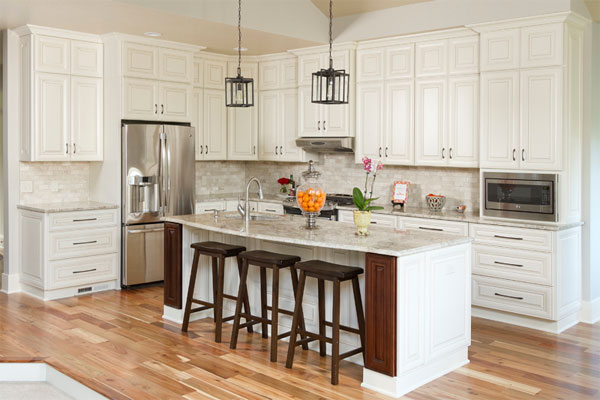Kitchen cabinets endure significant wear and tear in the kitchen. They are exposed to cooking splatter, accidental spills, and an onslaught of fingerprints daily. Despite their constant use, these hardworking lower and upper cabinets often receive less attention during routine cleaning sessions. As a result, by the time you notice their neglected state, dirt, grime, and grease buildup can be substantial. This issue becomes even more challenging when dealing with vintage cabinets, which require extra care to preserve their unique character and finish.
To restore your vintage kitchen cabinets to pristine condition, you need to follow a few straightforward yet effective steps. Let’s explore the best methods for cleaning and maintaining these classic pieces.
1. Empty Out the Cabinets
Consider cleaning your cabinets in stages rather than all at once, especially if you need to temporarily relocate their contents to countertops or other areas. Once you have emptied the vintage cabinets, remove any old shelf paper if necessary. Thoroughly wipe away dust and crumbs with a cloth and use a vacuum if needed to ensure no debris remains.
2. Clean the Cabinet Tops
If your cabinets do not reach the ceiling, the open space above can accumulate dust and grime. Use a sturdy ladder or stool for safety. For light dust, a handled duster or the round brush attachment on your vacuum cleaner will suffice. However, if grease has mixed with the dust, cleaning becomes more challenging.
- Spray the cabinet tops with white vinegar, then sprinkle baking soda over the surface. Let the mixture sit for a few minutes.
- Gently scrub with a soft sponge, then use a firmer edge, like an old credit card, to carefully scrape off grime.
- Wipe away the residue with paper towels or a clean rag.
- Spray white vinegar again and finish by wiping with a clean cloth to remove any remaining residue.
3. Prepare a Gentle Cleaning Solution
Maintaining your vintage cabinets requires a gentle yet effective cleaner. Here’s how to prepare one:
- Combine a few drops of mild dishwashing liquid with hot water to create a safe cleaning solution that removes dirt, light grease, and smudges while sanitizing the surface.
- Add a small amount of white vinegar for antibacterial benefits.
- Transfer the solution to a spray bottle, but avoid spraying directly on the wood. Instead, apply it lightly on a sponge or microfiber cloth to prevent wood damage.
4. Clean from Top to Bottom
Begin cleaning the upper cabinets first, then gradually work your way down to the lower ones. Clean the interiors thoroughly—including the back walls, sides, drawers, and shelves—paying extra attention to corners. Use a toothbrush sprayed with the cleaning solution for detailed scrubbing.
After scrubbing, wipe the surfaces with a sponge or cloth dampened with plain water to remove any soap residue. Dry completely and close the kitchen cabinets when finished. Always clean cabinet sides before moving on to drawers and door fronts for an efficient workflow.
5. Effectively Treat Grease Build-up
Grease accumulation is a frequent issue for kitchen cabinets in kitchens. To tackle it, prepare a mild paste by mixing baking soda with water in a 1:2 ratio. This affordable remedy targets yellowish, sticky grease effectively.
Apply the paste directly onto greasy spots and let it sit for several minutes. Then, gently scrub using a soft-bristled brush. Rinse with a damp microfiber cloth, sponge, or rag, and thoroughly dry the surface.
If you prefer commercial grease removers, always test the product on a hidden area first to avoid damage. Be cautious with magic erasers—they have a fine abrasive texture that can harm wood finishes.
For more information on 7 Tips & Tricks to Give Your Kitchen a New Look, please visit our dedicated Kitchen category.
Maintaining vintage kitchen cabinets not only keeps your cooking space looking elegant but also preserves the value and charm of your home’s classic design. Regular care with appropriate cleaning techniques prevents premature wear and discoloration. Incorporating natural cleaning agents like vinegar and baking soda ensures your cabinets remain chemical-free and eco-friendly. Additionally, timely maintenance can extend the life of cabinet hardware and finishes, reducing the need for costly restorations. Whether you’re a seasoned homeowner or new to vintage kitchen care, following these proven methods will help you enjoy a spotless, inviting kitchen for years to come.

























